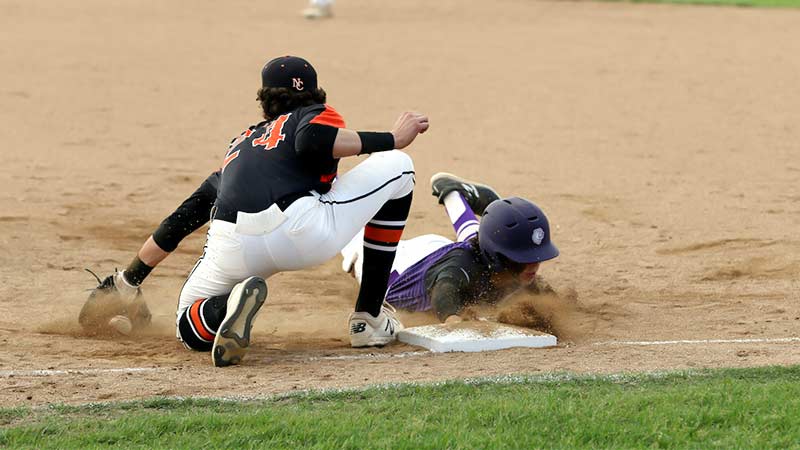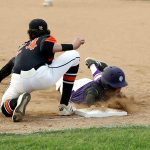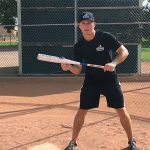Few moments in baseball are as electrifying as an inside the park home run. Unlike the traditional home run that soars over the outfield wall, an inside the park home run showcases a player’s speed, agility, and keen sense of timing.
It’s a thrilling spectacle that keeps fans on the edge of their seats, watching as the batter races around the bases, often sliding into home just ahead of the tag.
Inside the park home runs are rare feats, making them all the more memorable. For instance, Roger Bresnahan made history by hitting two inside the park home runs in a single game, not once but twice, in 1902 and 1904.
These remarkable achievements highlight the unique excitement that only an inside the park home run can bring to America’s favorite pastime.
Historical Overview of Inside the Park Home Runs
An exploration of the historical overview of inside the park home runs offers a fascinating journey through baseball’s evolution and the memorable moments that have shaped the sport.
Here’s a closer look at the origins, evolution, and notable instances of inside the park home runs:
Origins and Evolution
Inside the park home runs have a rich history in baseball, particularly in the late 19th and early 20th centuries when irregular and expansive outfield fences made these plays more common.
he lack of standardized field dimensions allowed for unpredictable bounces, providing fast players the chance to sprint around the bases.
As stadium designs evolved and outfield walls became more uniform, inside the park home runs became rarer, showcasing exceptional speed and skill.
Famous Early Instances
Numerous early instances capture the excitement of inside the park home runs. On August 18, 1909, Kyle Blanks of the San Diego Padres, despite weighing 285 pounds, hit an inside the park home run.
Five years later, Jhonny Peralta of the Cleveland Indians hit a three-run inside the park home run on July 18, 2010, showcasing that even slower runners could achieve this feat by capitalizing on an outfield mistake.
On July 8, 2015, Logan Forsythe and Jarrod Dyson exchanged inside the park home runs in a single game, highlighting the rarity and excitement these plays bring to the game.
Understanding Inside the Park Home Runs
An inside the park home run occurs when a batter hits the ball and successfully rounds all the bases to score without the ball leaving the field of play. This rare and exciting event contrasts with traditional home runs, where the ball is hit out of the park entirely.
What Qualifies as an Inside the Park Home Run?
An inside the park home run occurs when a batter hits the ball and rounds all four bases without the ball leaving the playing field. Unlike traditional home runs, the ball must remain in play.
The runner’s speed, decision-making, and fielding errors by the defense often contribute to this type of home run. Fielders might misplay the ball, leading to it rolling deep into the outfield or hitting off walls in ways that make retrieval difficult.
How It Differs From Traditional Home Runs
Traditional home runs involve the ball being hit out of the playing field, typically over the outfield fence. In contrast, inside the park home runs keep the ball in play.
This difference means that inside the park home runs rely more on the batter’s speed and the outfielders’ mishandling.
Traditional home runs guarantee an uninterrupted circuit around the bases, whereas inside the park home runs incorporate an element of strategy, risk, and defensive play.
Memorable Inside the Park Home Runs in MLB History
Memorable inside the park home runs in MLB history often stand out due to their extraordinary circumstances, showcasing the agility, speed, and sometimes the sheer determination of the players involved. Here are a few standout moments:
Record-Breaking Runs
Kyle Blanks hit an inside the park home run on August 18, 2009, becoming the heaviest player to do so at 285 pounds.
On July 18, 2010, Jhonny Peralta hit a three-run inside the park home run, taking 16.74 seconds, the slowest of that season, after Ryan Raburn crashed through the bullpen fence.
On May 25, 2013, Ángel Pagán hit a two-run, walk-off inside the park home run in the tenth inning, the first such walk-off since 2004.
World Series Highlights
Inside the park home runs in World Series history are rare but unforgettable, adding a unique excitement to the championship games. These moments showcase exceptional athleticism and strategic thinking under immense pressure, significantly impacting game outcomes.
The thrill of these plays adds to the mystique of the Fall Classic, captivating audiences and creating lasting memories in baseball history.
Factors Influencing Inside the Park Home Runs
Factors influencing inside the park home runs encompass various elements, from ballpark dimensions to player speed and strategic decisions. Here’s a breakdown of these influences:
Ballpark Dimensions and Features
Ballpark dimensions play a significant role in inside the park home runs. Variations in outfield wall distances, wall heights, and unique features like quirky angles or deep gaps affect fielders’ ability to retrieve the ball quickly.
For instance, Fenway Park’s “Green Monster” in left field and Minute Maid Park’s deep center field can create opportunities. Additionally, obstacles such as bullpen fences and seating areas can hinder players from making quick recoveries.
When outfielders face these challenges, batters benefit from the extra time needed to complete the inside the park home run.
Player Speed and Strategy
Player speed is crucial for inside the park home runs. Fast runners like Ángel Pagán can leverage their agility to round the bases quickly. Even slower players like Jhonny Peralta might succeed if fielders commit errors or encounter obstacles.
Strategy also matters; players need to assess outfielders’ positions and predict likely defensive missteps. Quick decision-making by coaches often directs base runners to keep advancing.
Therefore, combining speed with strategic thinking increases the likelihood of achieving an inside the park home run.
Frequently Asked Questions
Has anyone ever hit a walk-off inside-the-park grand slam?
Yes, Roberto Clemente of the Pittsburgh Pirates hit a walk-off inside-the-park grand slam in 1956, giving the Pirates a dramatic 9-8 victory. He accumulated nine inside-the-park home runs throughout his career.
How many MLB players’ first home run was an inside-the-park homerun?
Several MLB players have had their first career home run as an inside-the-park homerun. Notable examples include Marcus McCann and Ichiro Suzuki, showcasing the rarity and excitement of the feat.
Do inside-the-park home runs count as home runs?
Yes, inside-the-park home runs count as home runs. The batter must round all four bases without the ball leaving the field, and both the batter and all runners are liable to be put out by the defense.
Has a pitcher ever hit an inside-the-park homerun?
Yes, Henry is the most recent Major League pitcher to hit an inside-the-park homerun, achieving this rare feat in his sixth game. Joaquin Andujar was the previous pitcher to do so in 1979.
How many of Babe Ruth’s home runs were inside-the-park?
Babe Ruth hit ten inside-the-park home runs during his storied career. Despite being known for his power hitting, Ruth also showcased impressive speed and base running ability at times.
Conclusion
Inside the park home runs capture the essence of baseball’s unpredictability and excitement. They showcase the perfect blend of speed, strategy, and quick thinking, making for unforgettable moments on the field.
These rare feats remind you of the game’s rich history and the unique skills required to achieve such a thrilling play. Whether it’s the strategic placement of outfield walls or the sheer agility of players, inside the park home runs continue to be a testament to the dynamic nature of baseball.
So next time you’re at a game, keep an eye out for this exhilarating and rare occurrence. You never know when you might witness one of these electrifying plays that keep fans on the edge of their seats.
The roar of the crowd as a player races around the bases adds to the spectacle, creating memories that last a lifetime.








Pat Bloom